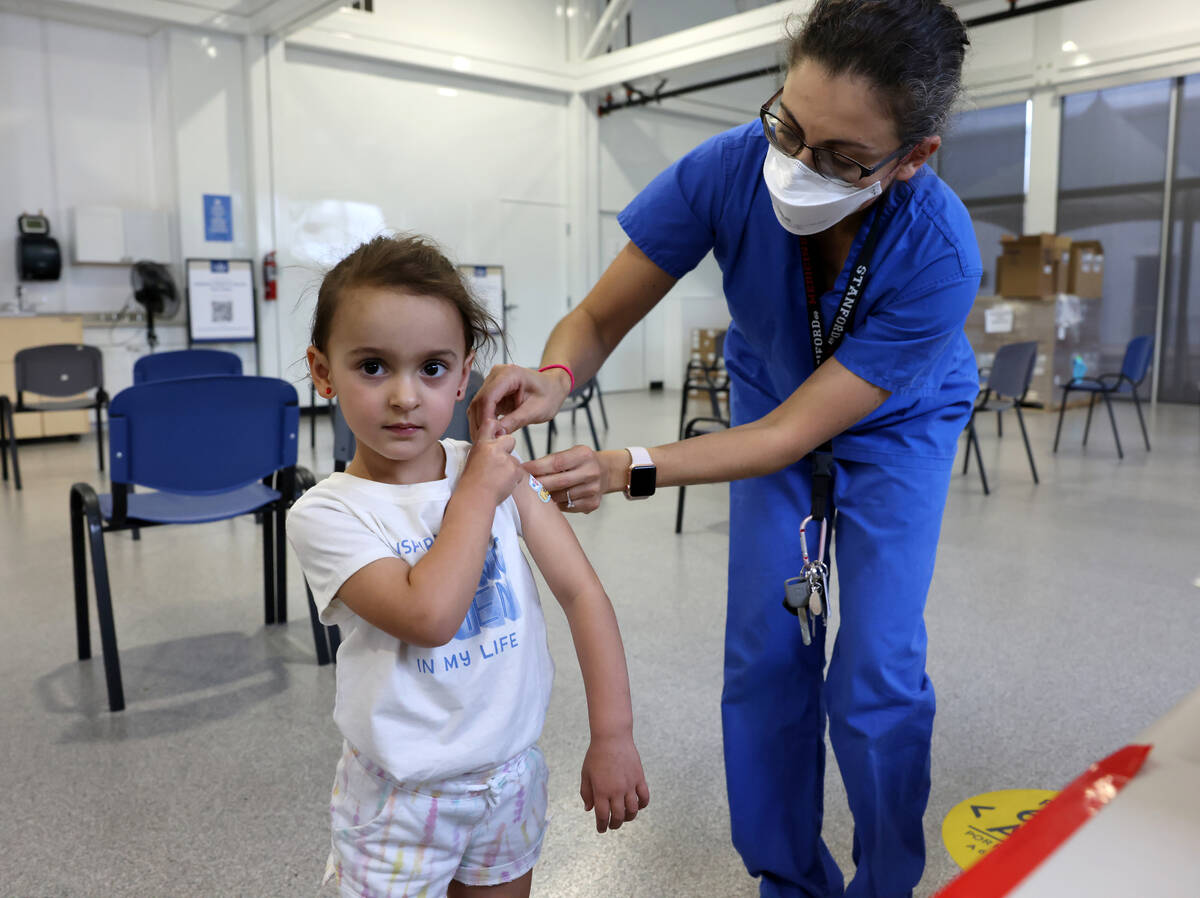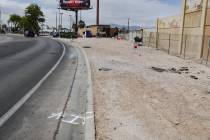COVID-19 cases, hospitalizations dip in Clark County and Nevada
COVID-19 cases and hospitalizations have dipped in Clark County and Nevada over the past week, state data released Wednesday shows.
In Clark County, the two-week average for daily new cases dropped to 627 from 708, according to data from the Nevada Department of Health and Human Services. Statewide, daily new cases also fell, to 840 from 923.
The number of patients hospitalized with COVID-19 in the county dropped to 413 from 432. Statewide, the number declined to 513 from 533.
The two-week daily average for deaths is two for both the county and the state, according to state data.
The cumulative total of confirmed COVID-19 cases in the county is 549,038, with 727,234 statewide. There have been 8,689 deaths in the county and 11,141 across the state since the start of the pandemic.
Levels of the disease remain high in Clark County, based on case counts and hospitalizations, according to the Centers for Disease Control and Prevention. About 7 percent of staffed hospital beds are occupied by patients with COVID-19.
The test positivity rate in the county is nearly 29 percent.
Although levels remain high, they pale in comparison to those of late January, when the seven-day average for hospitalizations and deaths in the county numbered 1,400 and 40, respectively. Currently, weekly hospitalizations number 400, with three deaths.
Wastewater analysis
Levels of the coronavirus in wastewater, an early sign of disease trends, also are plateauing or declining in the county and state, analysts said.
However, it remains uncertain whether the highly infectious omicron subvariant BA.5 — or another variant — will cause a surge this summer.
“Because BA.5 has taken a foothold in the community … we shouldn’t be surprised if wastewater concentrations begin to go back up,” followed by numbers of cases, said Cassius Lockett, director of disease surveillance and prevention for the Southern Nevada Health District.
BA.5 has shown an improved ability to dodge the protection of the immune system obtained through COVID-19 vaccination or prior infection. It has not been shown to cause more severe illness than its predecessors.
Dr. William Schaffner, a professor of infectious disease at Vanderbilt University, expects to see BA.5 “causing a substantial amount of minor illnesses, with occasional blips in hospitalizations” scattered across the U.S. as summer marches on.
BA.5, along with closely related variants BA.5.5 and BA.5.2.1, now account for 68 percent of COVID-19 cases genetically analyzed or sequenced in the past 30 days by the Nevada State Public Health Laboratory in Reno, according to the lab’s website.
BA.5 has been the dominant variant in wastewater in Clark County for about a month, said researchers who study wastewater for early clues about new variant levels of disease in communities.
With wastewater levels of the virus declining despite BA.5’s dominance, Andrew Gorzalski, molecular supervisor at the state lab, said he doesn’t expect to see a surge in cases in the next few weeks. Neither does he expect to see the high baseline number of cases decrease anytime soon, with summer gatherings and events giving the virus ample opportunity to spread.
Daniel Gerrity, principal research microbiologist for the Southern Nevada Water Authority, said, “While it’s entirely possible that we’ll see another spike in the coming weeks or months, it won’t be driven solely by the emergence of BA.5 – because it has already been here for a while.”
Playing whack-a-mole
Two weeks ago, there were signs in the county’ wasterwater of an even newer variant that concerns researchers, BA.2.75, said Edwin Oh, a researcher and assistant professor with the Kirk Kerkorian School of Medicine at UNLV.
The variant has caused concern because it appears to be spreading faster than other strains in India.
Locally, however, “whether BA.2.75 will drive a new wave of infection is still very unclear,” Oh said.
Sequencing by the state lab and by the health district of positive test samples has yet to detect any cases of BA.2.75.
“We’re going to continue to play this game of whack-a-mole with these variants,” Lockett said. “As one is getting a foothold and we’re waiting to see how it spreads, another one is sneaking up behind it.”
Contact Mary Hynes at mhynes@reviewjournal.com or 702-383-0336. Follow @MaryHynes1 on Twitter.


















































